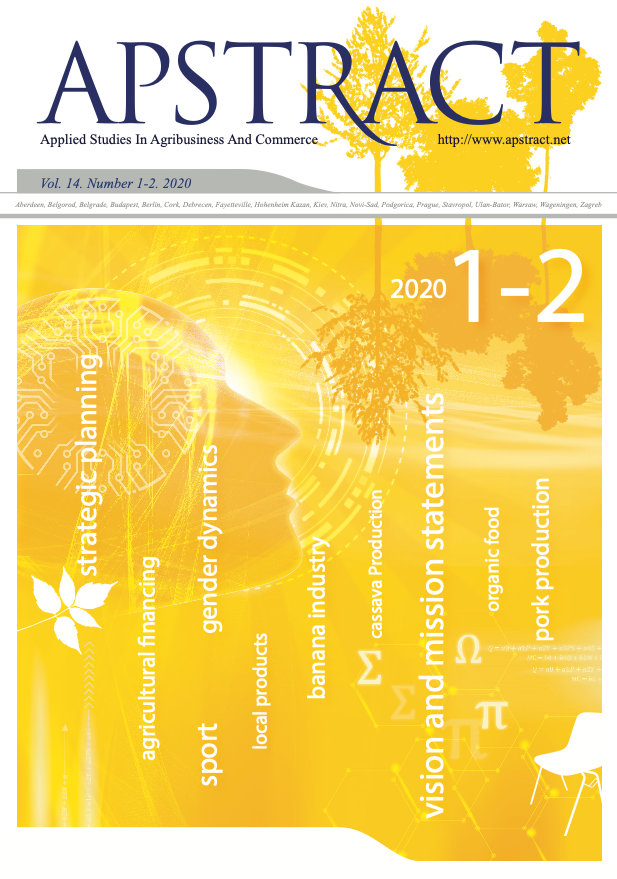The status of agricultural financing by commercial banks in Zimbabwe
Authors
View
Keywords
License
Copyright (c) 2020 Univesity o f Debrecen, Faculty of Economics and Business, Hungary

This work is licensed under a Creative Commons Attribution-NonCommercial 4.0 International License.
How To Cite
Abstract
Agricultural finance is indispensable for enhancing productive capacity in both small-scale and commercial farming. This study sought to establish the current status of agricultural financing by 12 registered and operational commercial banks in Zimbabwe in the year 2019. Questionnaires and interview guides were used to collect data. SPSS and NVivo were used for data analysis. All the commercial banks participated in agricultural financing with an average agricultural loan portfolio of 30%. However, their participation in agricultural lending is yet to reach the pre-land reform maximum of 91.3% attained in 1999. Land tenure and weather risks, as well as lack of collateral among farmers reduced the banks’ appetite for lending to the agricultural sector. The majority of the commercial banks offered value chain finance, invoice finance, overdraft facilities, and term loans to agricultural sector clients that mainly included; suppliers, medium-scale, and large-scale commercial farmers. The study established a mismatch in the demand and supply of loans in the medium to long term tenure range of 1 to more than 3 years. There was low demand for 1-3-year tenure loans according to the commercial banks, and a corresponding deficit in the supply of highly demanded longer-term loans of more than 3 years for capital expenditure (CAPEX). Therefore, government should aim to; stabilize currency; arrest hyperinflation; restore economic stability; address land tenure to ensure the bankability of the 99-year Lease; and create an environment that is conducive for investment in climate and weather resilience infrastructure. Local farmers should also invest in human and physical capital to improve their access to bank credit.
JEL Code: Q14


 https://doi.org/10.19041/APSTRACT/2020/1-2/6
https://doi.org/10.19041/APSTRACT/2020/1-2/6




